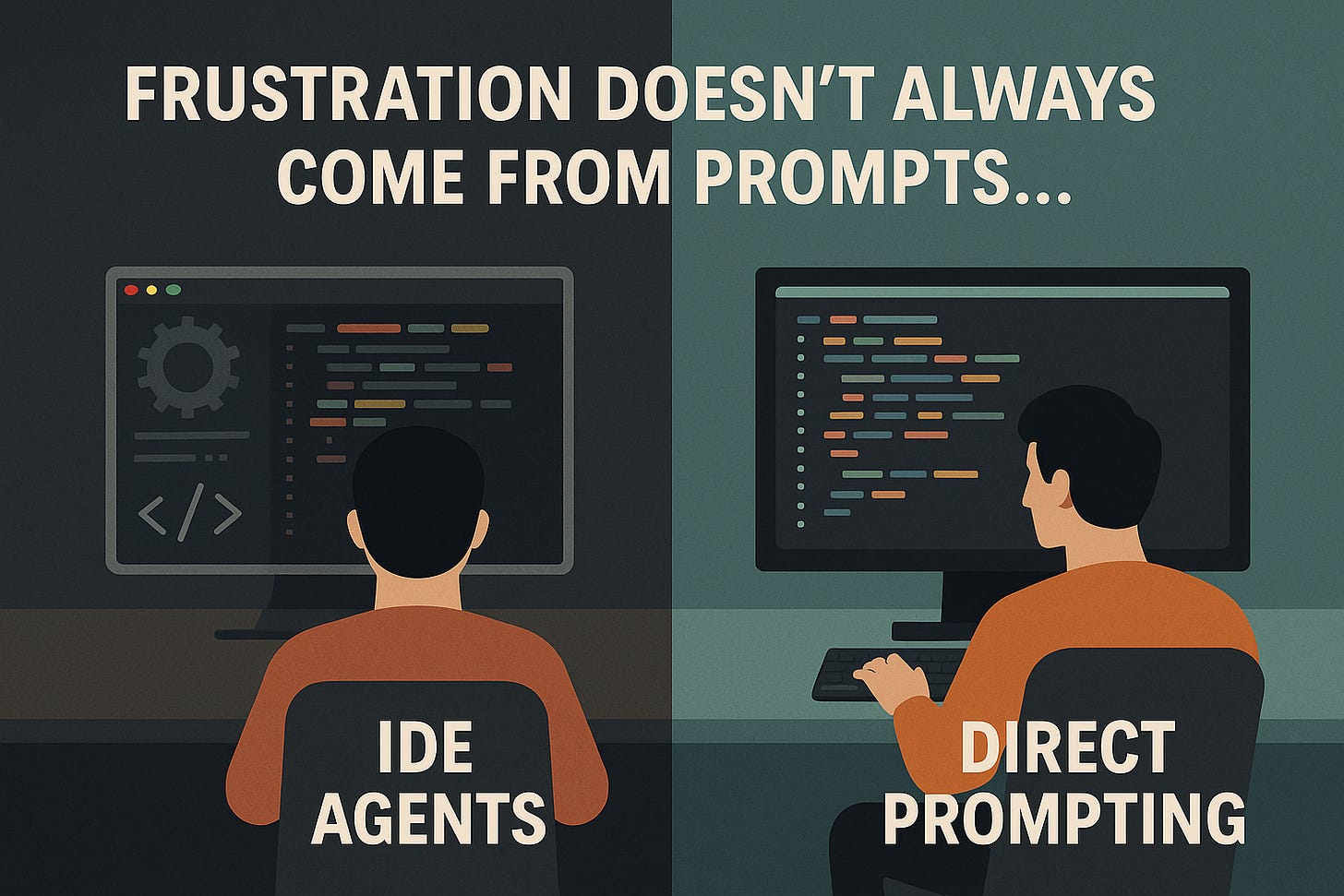When the Agent Butchers Your Prompt: Why AI Coding IDEs Often Deliver Worse Results than Direct Access
An Essay on Hidden Biases, Lost Control, and the Misunderstanding of the "Wrong Prompt"
It’s a phenomenon familiar to many developers by now: You write what seems like a clear and concise request to an AI coding IDE or agent—something like "a stylish calc.exe clone in HTML"—and what you get is a drab, 90s-style interface or some functional but uninspired code. The initial assumption is frustration: Was the prompt poorly written? Should it have been more detailed or more imaginative? But more often than not, the user is not to blame.
What’s happening here is structural. It lies deep within the architecture of how AI agents and so-called "AI coding IDEs" operate. And to be blunt: the causes are more serious than a mere prompt misfire.
Agents Have Assumptions You Never See
Unlike direct interactions with a language model (via API or WebUI), IDE agents like Kilo, Cursor, or GitHub Copilot actively interfere with the prompting process. They augment, rewrite, or wrap your input in specific system prompts or tool workflows. Your original intent gets re-coded along the way.
What sounds like "help" is in fact a subtle form of prompt distortion. Decisions get made on your behalf—like falling back on retro visuals, minimalism, or conventional HTML/CSS scaffolding. The model doesn’t return what you asked for; it returns what an internal control mechanism considers safe, robust, or beginner-friendly.
The Functionality Bias: Creativity as Collateral Damage
Agent-driven IDEs prioritize safety and predictability. In theory, that’s a noble goal. In practice, it’s often the death of stylistic freedom. Where direct prompting unleashes the model's full creative vocabulary (think: neumorphism, flat design, trendy UI patterns), agents fall back on conservative templates.
This is especially damaging in open-ended design tasks. When there are no strict functional constraints, agents default to visual equivalents of "safe and familiar." You could say: the fear of stylistic risk is baked in.
The Myth of the Wrong Prompt
Much of the frustration around poor AI output stems from a misunderstanding: users believe they weren’t specific or creative enough. In reality, their prompt—partially or entirely—was rewritten, reframed, or reinterpreted by an agent. The prompt wasn’t wrong. It just wasn’t the prompt that reached the model.
The result? Users try to optimize the output by rephrasing the input, even though the real problem lies elsewhere. It’s a cognitive detour, like trying to fix a room’s temperature by repainting the walls.
Context Is Never Neutral
The agent ideology of recent months relies heavily on context management: saving, recalling, semantically clustering. But context is never neutral. What gets remembered, weighted, and prioritized shapes the aesthetics and structure of the code in decisive ways. Often, the outcome is tuned toward functionality, not vision.
Direct prompting, on the other hand, allows ambiguity, prioritizes style, and even permits rule-breaking—things that agent logic and its layers of safety mechanisms rarely tolerate.
Conclusion: If You Want Control, Prompt Naked
True power lies where no intermediary interferes. If you want creative, stylish, or simply precise results, talk to the model directly—no agents, no preprocessed interfaces, just clean text.
Agents are great for structure, automation, and repeatability. But they are not creative partners. And they are rarely good designers.
So no, your prompt wasn’t necessarily the problem. The architecture was.
Next time your calc.exe clone looks like a student project from 1996, don’t ask yourself, "Did I phrase it wrong?" Ask yourself instead, "Who turned my question into something else?"



